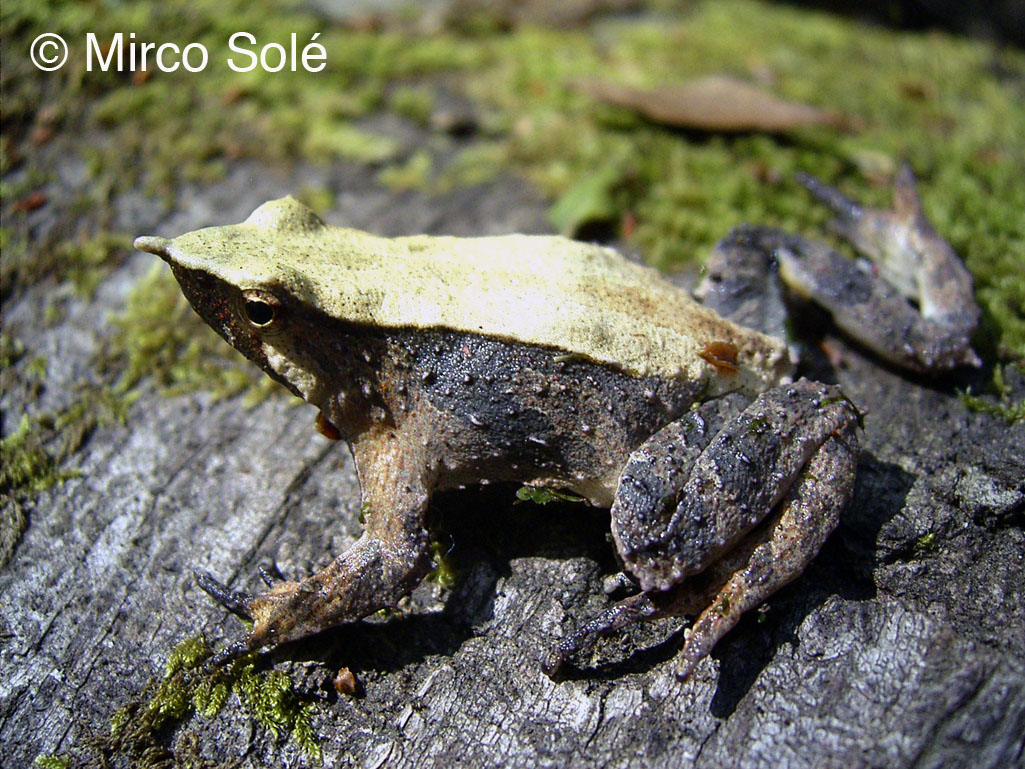Parental Care In Darwin's Frog (Rhinoderma darwinii)
Biology 342 Fall 07
Kristy Gonyer
Ontogeny
Sterotyped Behavior, Hormones, and Olfactory Learning

Rhinoderma darwinii
Used with permission by Micro Sole
Sterotyped Behavior, Hormones, and Olfactory Learning
No studies have been done directly with R. darwinii to determine whether their parental care behavior is learned or innate. However, in most amphibians reproductive behaviors are very stereotyped. They also do not have a highly developed cortical, therefore their hormones and gene expression are more likely to affect their behavior than other higher brain functions (Moore, 1983).
One of the few examples of learning in amphibians has to do with olfactory imprinting. Many species of anurans imprint on chemical cues from their native pond and kin. In some cases these cues are later used to return to their native pond to reproduce (Ogurtsov, 2004).
Male R. darwinii tend to stay within at least 0.5m of their unhatched eggs (Crump, 2002). It is not inconceivable that R. darwinii may use some form of olfactory learning to stay near the unhatched eggs. The swallowing mechanism in R. darwinii is highly stereotyped. It is stimulated by the muscular contractions of the nearly hatched larva and has been described as similar to prey snatching behavior (Busse, 2003).